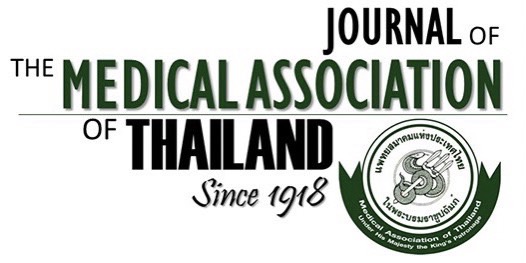Intravitreal Bevacizumab at the End of Diabetic Vitrectomy for Prevention of Postoperative Vitreous Hemorrhage: A Comparative Study
Choeng Jirawison MD*, Nimitr Ittipunkul MD**
Affiliation : * Department of Ophthalmology, Nakornping Hospital, Chiang Mai, Thailand ** Department of Ophthalmology, Faculty of Medicine, Chiang Mai University, Chiang Mai, Thailand
Objective : To study the role of intravitreal injection of bevacizumab (Avastin) at the end of vitrectomy for prevention of
postoperative vitreous hemorrhage in diabetic eye disease.
Material and Method: The authors conducted a retrospective, comparative, nonrandomized study comparing patients with
diabetic eye disease who received a 1.25 mg bevacizumab injection at the end of vitrectomy to a group with diabetic eye disease
who underwent vitrectomy but did not receive this injection. For statistical analysis, each patient was assigned to one of four
groups according to the hemostatic modalities used (group 1, none; group 2, only long acting gas; group 3, only intraoperative
intravitreal bevacizumab; group 4, both long acting gas and intraoperative intravitreal bevacizumab). The primary outcome
measure was the incidence of early and late postoperative vitreous hemorrhage (POVH). The secondary outcome measure
was visual acuity (VA) at 1 and 6 months.
Results : The present study included 87 eyes from 78 patients. The 87 eyes were categorized in the four groups described
above. The incidence of early postoperative VH was lowest in group 3 (5%), followed by group 1 and group 4 (13%) and
group 2 (16%) (p = 0.49). No eyes in group 1 or group 4 had late postoperative VH. Group 3 had the lowest incidence of VA
below 20/200 (11%) in the first postoperative month, followed by group 1 (22%), group 4 (33%) and group 2 (50%) (p =
0.44). Group 3 also had the best visual recovery (VA above 20/50) with 38% at the end of six months compared with 13% in
group 1, 7% in group 4 and no eyes in group 2 (p = 0.03).
Conclusion : Patients with intravitreal injection of 1.25 mg bevacizumab at the end of diabetic vitrectomy had the lowest
incidence of early postoperative vitreous hemorrhage with no statistical significance. However, they had significantly the best
visual recovery at the end of six months.
Keywords : Avastin, Bevacizumab, Diabetes mellitus, Proliferative diabetic retinopathy, Vitrectomy, Vitreous hemorrhage



